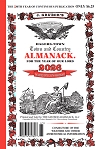The Art of Canning Part 2
BASIC CANNING EQUIPMENT
The type of canning equipment that you will need will be determined by the method you choose to use. The Pressure Canning Method is the most effective but when compared to the Water Bath Canning Method, its initial start-up cost can be considerably higher. Because it can involve a sophisticated piece of equipment, with its own set of specific brand and model-dependent operating instructions, we will detail the steps involved with the Boiling Water Bath Canning Method. The food preparation and packing techniques are similar for both methods.
A water bath canner is simply a large cooking pot with a tight fitting lid and a wire or wooden rack inserted inside to keep the jars from touching each other during the process. This allows the boiling water to flow around and underneath the jars for a more even processing of the contents and keeps the jars from bumping each other and cracking or breaking (if you don’t have a rack, clean cotton dish towels can be used to pack around and under the jars). Its diameter should be no more than 4 inches wider than the diameter of your stove's largest burner to ensure proper heating of all jars. Never use a larger kettle (over two burners). Jars in the middle of the kettle will not get enough heat.
While canning jars and lids come in a variety of sizes from half-pint to half-gallon, pint- and quart size jars are the most commonly-used and are also available in wide-mouth tops. Jars may be reused indefinitely as long as they are kept in good condition. Most canning jars use a two piece self-sealing lid consisting of a flat metal disc with a rubber-type sealing compound around one side near the outer edge and a separate screw-type metal band. While the flat lid may only be used once, the screw band can be used over as long as it is cleaned well and does not begin to rust. Mason, Ball and Kerr are the most common brands of jars and lids specifically designed for home canning. Commercial mayonnaise jars, baby food and pickle jars or any of their lids should never be used. The mouths of the jars may not be appropriate for the sealing lids and those jars are not made with heavy glass nor have they been properly heat-treated.
Though there are many specialty utensils available like apple slicers, cutting spoons for coring and pit removal, corn cutters, and fruit skinners, there are a number of items that are a must to have on hand to make the process go smoothly. A good pair of tongs with rubber tips is essential for easy removal of hot jars from the bath. To improvise, wrap a number of thick rubber bands around any set of tongs. A jar funnel helps when pouring and packing liquids and small food items into canning jars. There are magnetized lid wands that allow you to safely remove treated jar lids from hot water. A narrow rubber spatula will be needed to remove trapped air bubbles surrounding the food inside the jar after packing and before sealing. A timer or clock is needed to maintain proper food processing time. Finally, to wipe jars rims spills. and general cleanup, have plenty of cloth towels or rags on hand.
To start, make sure you have everything that you need before you start any food preparation. Once you begin the canning process you need to work as quickly as possible without delays.
Fill the water canner with hot water and begin heating it to a boil. The water bath requires 1 to 2 inches of water to be above the tops of jars. This can be difficult to determine before the filled jars are in place but after a batch or two you will learn how much water you have to add. It is a good idea to have an extra small pot of water heating just in case.
Examine the jars and discard those with nicks, cracks, and rough edges. These defects will not permit an air-tight seal. All jars should be washed in hot, soapy water, rinsed well and then kept hot. This can be done in a dishwasher. The jars must remain hot to prevent any breakage when they are filled with the hot food and syrup and placed in the kettle of boiling water for processing.
For more of THE ART OF CANNING, click here


















